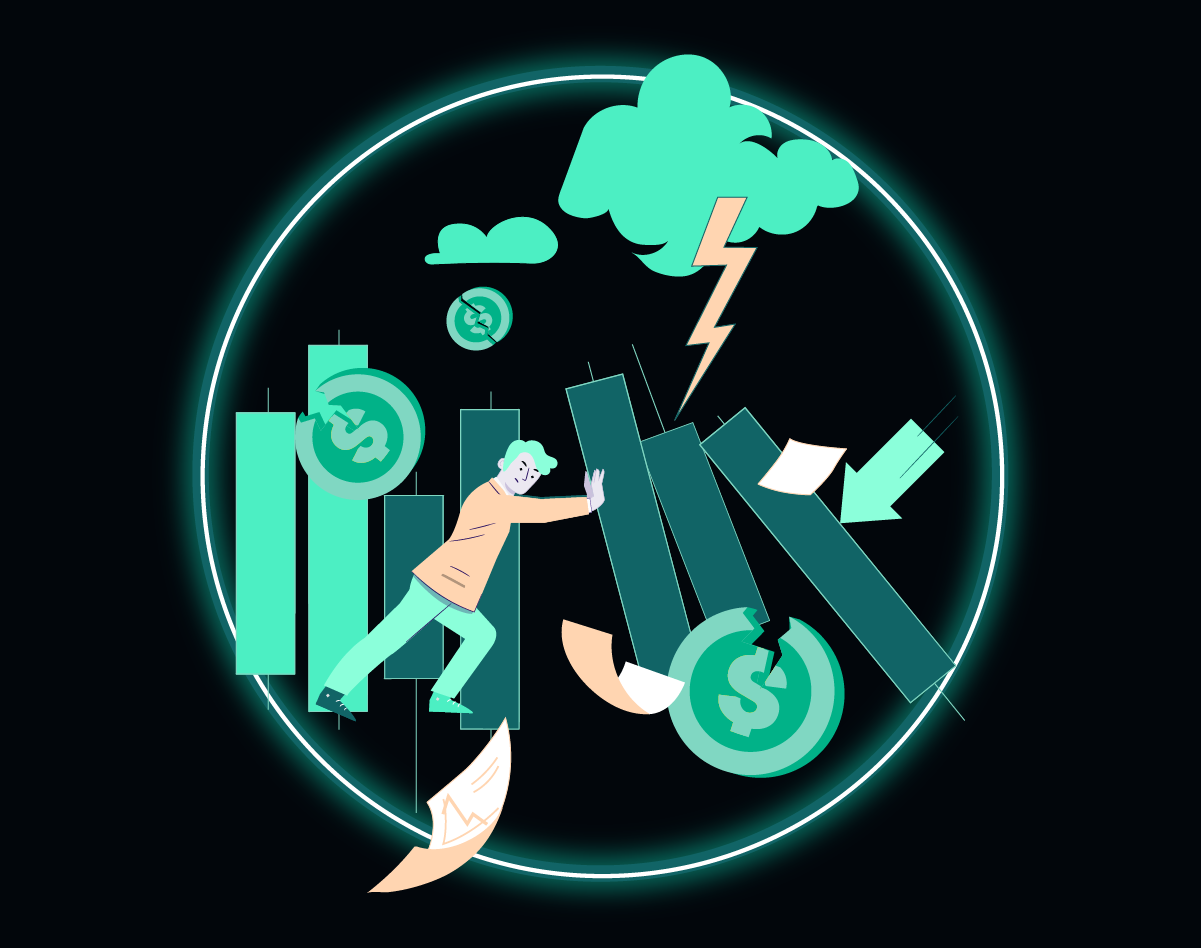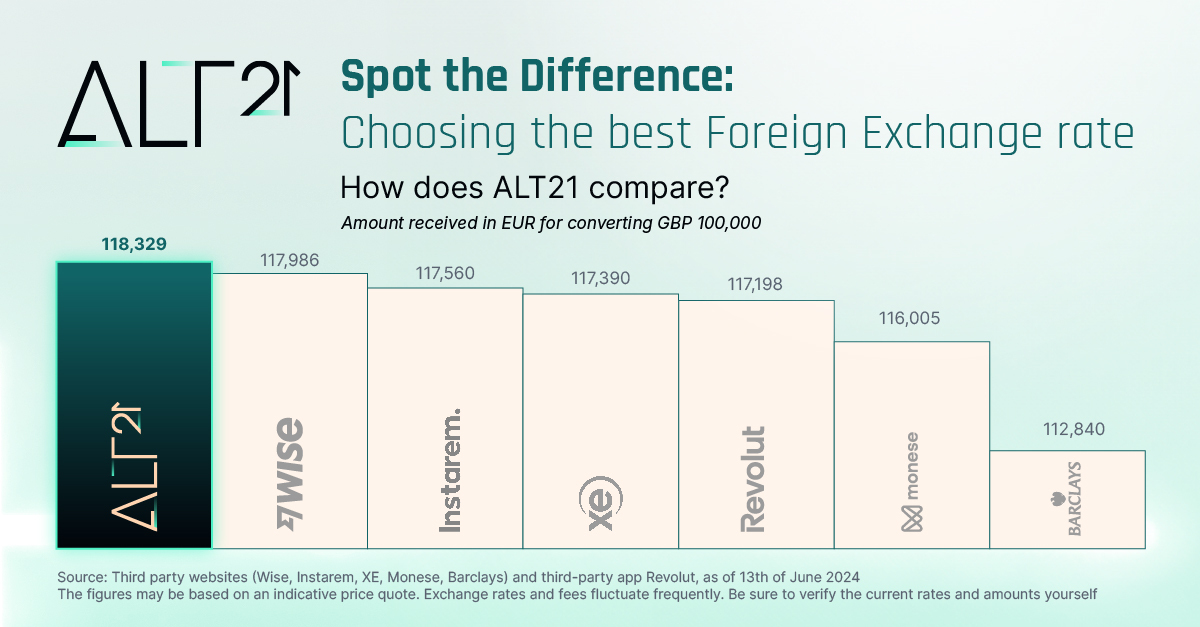Carry trades are a staple of the currency markets, because they can offer steady (and very healthy) returns. But if the markets turn and investors decide a carry trade is no longer worthwhile, the unwinding can make downturns — and the wider economic situation — much, much worse.
In this post, we’ll look at seven instances when unwinding carry trades crashed the markets, and the dire consequences this had for the economies involved.
What’s a carry trade and how does it unwind?
In basic terms, a carry trade involves borrowing money at low interest and investing it in assets that pay high interest.
If you’ve ever used a credit card with a 0% interest introductory offer or a low-interest loan to invest in your business, you’ll be familiar with the concept. On the currency markets, investors take things to the next level by shopping around the world economy for the lowest available borrowing rates and the highest available yields — a technique called arbitrage.
Say interest rates are 1% in Japan and 5% in the US.
Investors would borrow in Yen, then convert the money to Dollars and use it to buy up US investments. Just like that, they’re making a profit of 4% interest a year on money they don’t even own.
Except, it’s not that simple.
Local, regional, and global events can create economic difficulties and cause exchange rates to fluctuate in ways that make carry trades less profitable. For example, the Dollar might weaken against the Yen.
If things get bad enough, investors can decide to unwind those trades. In other words, they’ll withdraw their money and put it in safer investments.
In the seven examples below, this is exactly what happened.
1. The Yen speeds up a global economic meltdown
In the heady years leading up to the 2008 financial crisis, the Yen was the world’s most popular funding currency for carry trades.
After the Japanese stock market crashed in 1991 and caused a recession, the Bank of Japan decided to keep interest rates low. The aim was to give the economy a shot in the arm by making borrowing cheap and encouraging people to spend more money. But the move also had the unintended consequence of turning the country into the world’s leading supplier of cheap credit.
While nobody knows for sure how much money was tied up in Yen carry trades when the 2008 financial crisis hit, some estimates put it in the region of hundreds of billions of dollars (and these are the conservative ones).
But the bigger issue was that a lot of this money was invested in risky assets, including subprime mortgages.
Once the housing bubble burst and people all over the world started defaulting on their mortgages, investors scrambled to unwind their carry trades. The panic helped precipitate the global economic crisis, and put the Japanese economy in deep trouble.
The Yen is considered a safe haven currency — a currency investors like to hold on to during times of economic difficulty. With one of the worst recessions in history looming and billions no longer tied up in carry trades, demand for the Yen spiked, which drove up its value.
Because the Japanese economy is heavily reliant on exports, the stronger Yen was a double-whammy. Not only were consumers around the world buying less because of the recession, but Japanese products were now also more expensive than those of competitors in other countries.
Inevitably, exports collapsed, and Japan suffered the worst economic performance in the G7.
2. US Dollar-denominated Mexican debt gives investors a hangover
In 1994, the Mexican government issued several short-term debt instruments denominated in Pesos, but with guaranteed repayments in US Dollars, in an effort to attract more investment.
At the time, Mexico had just signed up to NAFTA — the North American Free Trade Agreement — and investor confidence was high.
The Peso was also pegged to the US Dollar. This meant the exchange rate between the two currencies was fixed, giving investors more certainty and, so, making the offer more attractive.
What the Mexican government didn’t bank on was that it would find itself in the eye of a perfect storm within a matter of months.
A slew of high profile kidnappings and the assassination of presidential candidate Louis Donaldo Colosio sparked fears that law and order had broken down. This scared investors, who promptly sold off their Pesos. And, with the Peso’s value tanking, the Mexican government had to sell off their US Dollar reserves to maintain the peg.
With most of the country’s US Dollar reserves tied up, paying off the Dollar-denominated debts — to make matters worse, many fell due within months — became a struggle. At one point, the Mexican government owed $35 billion, but only had $6 billion in reserves.
The proverbial straw was the US Federal Reserve’s decision to hike interest rates. Suddenly, investors could get a better yield on their Dollar investments with far less risk, so they pulled out of Mexico.
Eventually, the government ran out of Dollar reserves and had to ditch the peg. By December 1994, the Peso had been devalued by 15%, and Mexico had to put up its oil reserves as collateral and commit to strict fiscal discipline in exchange for a $51 billion bailout.
3. Asian tigers go from predators to prey
Like Mexico, Thailand, Malaysia, Indonesia, and other East Asian countries’ currencies were pegged to the US Dollar during the 1990s.
Because the US Dollar was weak, pegging made these countries’ exports more competitive. Coupled with other policies — like business subsidies and government-backed investment schemes — aimed at boosting economic growth, they became attractive places for carry traders to invest.
The problem was that investors often took government guarantees at face value and didn’t conduct proper risk assessments.
As a result, once the Dollar strengthened, everything began to unravel. Not only had these countries become heavily indebted to fund ill-advised or financially unviable projects, they now also had to sell off their foreign currency reserves to maintain their pegs with the Dollar.
Needless to say, as soon as things went south, investors pulled out faster than you can say ‘government subsidy’. Many then started betting against these countries’ currencies on the FX markets, which made it even harder for them to maintain their pegs with the US Dollar.
The Thai Baht collapsed first, followed by the Indonesian Rupiah, the Filipino Peso, the Singaporean Dollar, and the South Korean Won.
The International Monetary Fund eventually stepped in, loaning billions to the hardest hit countries in exchange for them committing to measures that included cutting spending, raising taxes, and eliminating business subsidies.
4. The Russian Rouble’s spectacular crash
Oil. Gas. Wheat. Iron. Cobalt.
Russia’s status as a commodity superpower, and the high yields this can generate, has made the Rouble popular in carry trades (at least until its senseless invasion of Ukraine in 2022).
But in 1998, investors couldn’t get out of the country fast enough. And even massive 150% interest rates couldn’t persuade them to stay.
The trouble started in November 1997, when speculators decided that the Rouble was weak and bet on its value going down. At the time, the Rouble was pegged to the US Dollar, so the Russian government had to intervene, spending $6 billion of its foreign currency reserves to maintain the peg.
Then, commodity prices plunged, which reduced the country’s revenue significantly. To compound its financial woes, the government wasn’t especially great at collecting taxes, and had just spent billions on a war in Chechnya.
By June 1998, Russia’s debts were 40% higher than its tax revenue. Fearing the government would default, investors scrambled to get their money out of the country, with the result that the stock market crashed and the Rouble had to be devalued.
In the aftermath, inflation hit 84%, leading to strikes and civil unrest. But the devaluation saved the Rouble by making Russia’s exports more competitive at the same time as trade in commodities boomed once more.
5. The Turkish Lira stops being a delight
In the early 2010s, the Turkish Lira became a darling of the carry trade, particularly among investors with US Dollars.
The US Federal Reserve had just slashed interest rates to nearly zero. Meanwhile, the Turkish economy was booming, making the Lira very appealing.
The economy made an about turn in 2013, when Prime Minister Erdogan decided to take an extremely heavy-handed approach to a group of activists who were protesting the proposed demolition of Istanbul’s Gezi Park.
The excessive use of police force shocked the world and sparked mass demonstrations across the country. But, instead of relenting, Erdogan doubled down, with the result that Turkey slid into authoritarianism.
Since then, the Lira has become far less attractive.
The Turkish Central Bank embarked on an interest rate-lowering spree, lowering it three times just in 2022.
Erdogan also has a track record of interfering in fiscal policy, with disastrous results, to the point where the Lira and the Turkish economy have been in crisis since 2018.
6. The King of the Carry loses its status
Australia’s historically high interest rates, commodity-heavy economy, and AAA credit rating have made the Australian Dollar attractive to investors looking for high yield, relatively low-risk carry trades.
Then, in 2013, three things happened.
First, the volume of capital flowing into the country had dramatically increased the supply of money, which hurt the currency’s exchange rate.
Second, the economy was underperforming.
And, third, and crucially, there was a rumour going around that George Soros — the man who infamously broke the Bank of England — had bet $1 billion on the Australian Dollar falling in value.
This spooked investors, and the Australian Dollar crashed.
Since then, the currency has become popular in carry trades once more, but as a funding currency, not as an asset currency. A growing number of investors are borrowing Australian Dollars and investing in emerging markets.
7. A peripheral affair
During the 2000s, high yields on 10-year bonds made the countries on the Eurozone’s periphery — Italy, Greece, Spain, Portugal, and Ireland — attractive places to do carry trades.
Unfortunately, because they had weaker economies than the rest of the bloc, they started struggling to repay their debts once the economic shock of the 2008 financial crisis hit.
Things came to a head when Greece revealed that previous governments had been underreporting the size of the country’s deficit. This destroyed investors’ trust. And with investors reluctant to hold these countries’ bonds — Greece’s and Ireland’s were temporarily downgraded to junk status — interest rates shot up to unsustainable levels.
With the Euro’s existence under threat, the EU intervened, creating the European Financial Stability Facility to provide financial assistance to these countries by — you guessed it — issuing more bonds.
The story has a (somewhat) happy ending.
Because the bonds were backed by the EU, the markets calmed down and the crisis was largely over by 2012.
That said, the affected countries’ economies still suffered long-term negative impacts. Greece went through a particularly tough period, as the conditions of its financial bailout forced it to raise taxes and make huge spending cuts.
Don’t let unwinding carry trades be your undoing
From political instability to government mismanagement, excessive speculation and even market rumours, investors can unwind their carry trades for all sorts of reasons. And because they’re the motor of the world’s economy, it’s small businesses that are hardest hit when the negative consequences of these decisions hit.
Economic turmoil can mean raw materials cost more, your exports are less competitive, and credit is less affordable (or harder to come by), hurting your profits and making it harder to grow. Which is why it’s critical to have a plan.
And that’s where hedging comes in.
With a hedging strategy in place, you can lock in a favourable exchange rate that keeps your costs predictable and protects important customers from sudden shocks.
Why leave your business’ future in the hands of the Erdogans and George Soroses of the world, when having a plan in place can help you stay in control?
Find out how one of our partners can help – powered by our technology platform.



